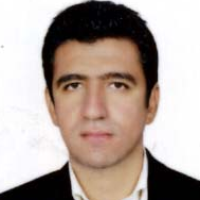Recognition of the Pirnya's Five Principles in the Iranian traditional home and its analysis based on Islamic sources
Author(s):
Abstract:
Generally, art is a tool for transfer thought, belief and approved worthiness by any civilization that by study nations artworks can understand their ideology and belief. In this regard, architecture as art perspectives has special portion in rights and theoretical worthiness transferring in every society. In particular, when Islamic architecture is contemplated, the architecture works are manifestations of the Islamic tradition which is transmitted in the Qurans paradigms and innocent words, from generation to generation and in different era in have been manifested in various forms. However, these works, based on any form and function, are based on common principles which they are referred to as the principles of Iranian-Islamic architecture. According to Pirnya, these rights consist of five principles: Avoid of idleness, Introspection, Structure, Adequacy and Humanistic which is represented in various architectural forms including home architecture. So, The Muslim architecture, based on Islamic principles, has tried to illustrate these principles in his architecture. The aim of this research is the exhibit ability of these principles in house architecture and rooting these principles in the theoretical foundations of the school of Islam. Accordingly, first by referring to the architectural texts as well as the views of the owners we have extracted practical solutions to these principles in house architecture. Then by referring to the Qurans paradigms and the traditions and existing hadiths an attempt has been made to root them in the basics of Islam. Research methodology is qualitative includes descriptive-analytical method as well as content analysis method. The results of the research showed that the five principles of Iranian-Islamic architecture are entirely based on the beliefs and ideological principles of Islam. And the Muslim architecture with the knowledge of these bases uses these principles in order to manifest them in their works.
Keywords:
Language:
Persian
Published:
Journal of Studies On Iranian - Islamic City, Volume:7 Issue: 27, 2017
Pages:
51 to 66
https://magiran.com/p1745944
سامانه نویسندگان
مقالات دیگری از این نویسنده (گان)
-
Evaluation of the energy demand in the building by using a sunspace in combination with solar chimney
Hamid Eskandari, Yaghob Peyvastegar *, Aliakbar Heidari
Journal of Urban Management and Energy Sustainability, Summer 2023 -
A Comparative Investigation of Physical-Environmental Factors Affecting the Cognitive Skills of 9-12-years-old Children (Case Studies: [Primary] Schools of Shiraz University of Medical Sciences and Shiraz University)
Marziyeh Shahroudi-Kolour, Ali-Akbar Heidari *
Journal of Architect, Urban Design & Urban Planning,



